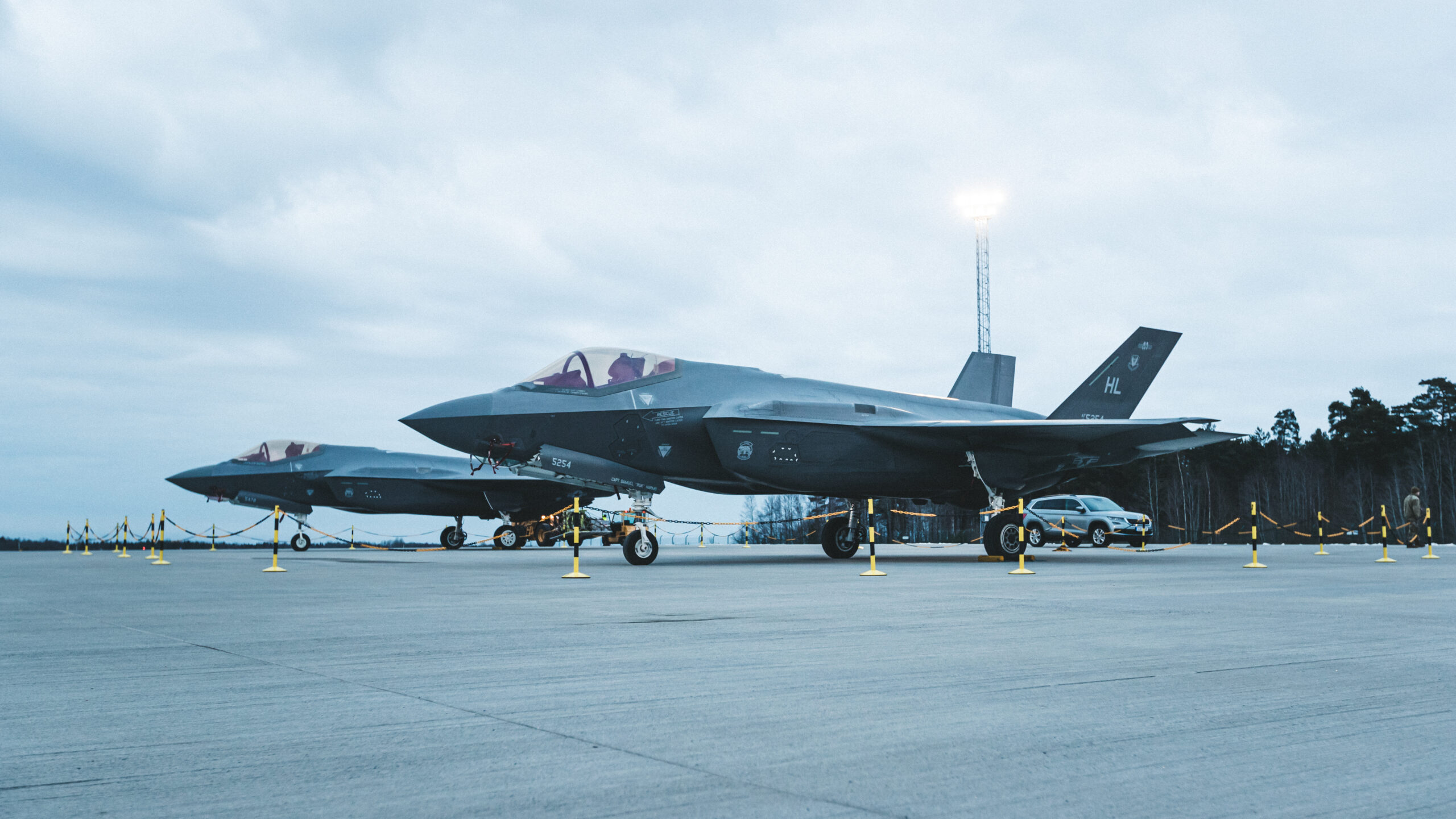
Two U.S. Air Force F-35 Lightning II aircraft assigned to the 34th Fighter Squadron at Hill Air Force Base, Utah, arrive at Ämari AB, Estonia. (DVIDS)
BELFAST — Estonia has called on NATO members to increase defense spending “closer” to 2.5 percent GDP in a bid to strengthen collective support for Ukraine.
Estonian defense minister Hanno Pekvur made the plea during a bilateral meeting on Thursday in Tallinn with US defense secretary Lloyd Austin.
“All European partners and NATO allies must spend more than 2 percent, ideally closer to 2.5 percent of their GDP on defense,” said Pekvur. “More can only be given when there is more to give.”
An increase from the current NATO target of 2 percent GDP is expected to be approved by alliance members at the Heads of State Summit in Vilnius, Lithuania, due to be held in July 2023, but it’s unclear how large that increase will be.
Allied defense ministers held initial discussions on military spending in Brussels, Belgium, this week, while Russia is currently engaged in “launching new offensives” against Ukraine, according to NATO secretary general Jens Stoltenberg.
Estonia, though a tiny Eastern European nation, has been a vocal proponent not just of increased domestic military spending, but assistance to Ukraine. Tallin’s aid to Kyiv has “recently exceeded” 1 percent GDP, Pekvur said, which makes it the most generous nation per capita, even if its total aid is dwarfed by larger nations like the US. Part of that spending goes toward the Tallinn Pledge supply to Ukraine of main battle tanks, heavy artillery, air defense items, ammunition, and infantry fighting vehicles, originally signed by Estonia, Czech Republic, Denmark, Latvia, Lithuania, the Netherlands, Poland, Slovakia and the United Kingdom in January.
Alongside the request for NATO allies to increase defense spending, Pekvur proposed the “international coalition” supporting Ukraine, should commit to funding of at least €100 billion euro ($106.8 billion) in military aid by the end of 2023.
He also called on the European Union to approve the supply of one million artillery rounds to Kyiv and noted that Estonia’s new national security strategy “foresees a new standard of at least 3 [percent] of GDP for defence [spending].”
Estonia hosts one of eight NATO battalion-sized multinational battlegroups critical to the alliance’s Russian deterrence posture and eastern flank presence, stretching from the Baltic Sea to the Black Sea.
“We will continue to upgrade [in country] allied infrastructure and expand training opportunities to support US and other allied deployments to Estonia because we recognize that it is best to practice defending Estonia in Estonia,” said Pekvur.
Estonia’s National Defense Investment Center ordered six M142 High Mobility Artillery Rocket Systems (HIMARS) from Lockheed Martin in a deal worth more than $200 million, according to the US Defense Security Cooperation Agency which approved the potential sale in December 2022.
First deliveries are expected in 2024, but a US HIMARS unit has already been deployed in Estonia to strengthen NATO eastern flank priorities.
The US has also provided HIMARS to Ukraine, where they have “helped to destroy Russian military ammunition warehouses, transport nodes, and command and control centres,” according to Estonia’s National Defense Investment Center.
Used to support long range indirect fires through launch of Multiple Launch Rocket System (MLRS) family of munitions, HIMARS hosts a multi-launch rocket system mounted on a medium tactical vehicle and is interoperable with C2 systems.
As NATO allies continue to work on delivering land-based equipment like Leopard main battle tanks and CV90 infantry fighting vehicles, Austin said that US forces are training Ukrainian troops in Germany on Bradley and Stryker vehicles.
Asked how the US would respond if Estonia was to come under attack by Russia, he added, “We’ll live up to our commitments,” and stressed the Biden administration’s support for NATO’s Article 5 remains “ironclad.”
Move over FARA: General Atomics pitching new Gray Eagle version for armed scout mission
General Atomics will also showcase its Mojave demonstrator for the first time during the Army Aviation Association of America conference in Denver, a company spokesman said.


























